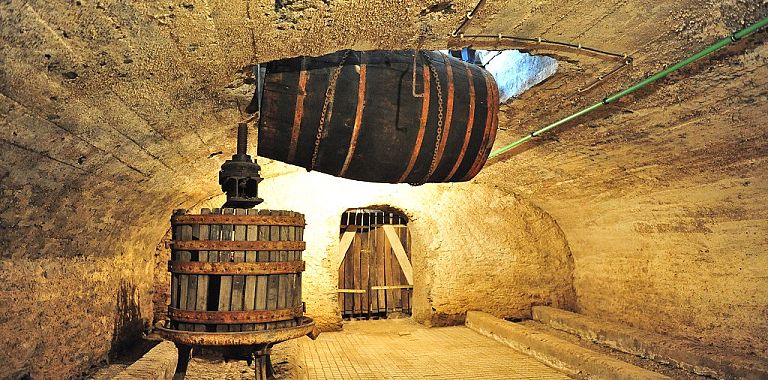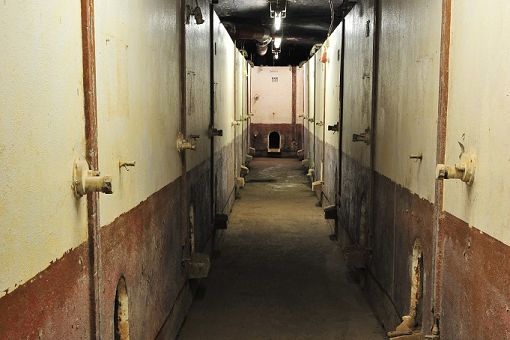
Franz Wilhelm Langguth’s Mosel Cellar and Deep Cellar
The Mosel Cellar
On the banks of the Mosel, adjacent to the commercial premises, stands the Neo-Classical villa built at the middle of the nineteenth century by the family of Johann Wolfgang Langguth.
The vaults constructed beneath the building and neighbouring parklands are these days difficult to recognise as such.
In architectural terms they resemble the cross vault design found in the Tiefkeller nearby. The difficulties encountered when seeking to establish the original structure are caused by precisely 47 built-in concrete tanks, each with a capacity of approx. 20,000 litres, which were constructed between 1950 and 1960. This gave a total volume of some 2.5 – 3 million litres which, owing to the remarkable success of the Langguth wine label, was well needed.
Repeated flooding and the impact this had on commercial operations meant that towards the end of the twentieth century the Langguth cellars relocated to the Mont-Royal. Hence the empty concrete tanks you see today.
The Deep Cellar
One of the largest wine cellars on the Rissbacherstraße in Traben is that of the tradition-steeped Langguth Heirs’ Winery.
Resident in Trarbach since the eighteenth century, the family erected this extensive wine cellar and a prestigious residence in Traben during the mid-eighteen hundreds.
From the side of the commercial premises you descend 26 steep stairs into the so-called "Tiefkeller" with its impressive cross vaulted structure. Parallel to the street are four barrel or flat vaults respectively, intersected at right angles by a connecting vault.
The barrel stores along the sides were designed to take several hundred tuns of Mosel wine. A considerable number of round and oval wooden barrels are still to be seen. In addition to several plastic tanks dating from the mid-twentieth century, there are a number of huge concrete tanks lined with glass tiles located right at the end which are far more interesting architecturally.
The largest, with a capacity of over 100,000 litres, is simultaneously the oldest on the Mosel (date of construction 1896). It is thus indicative both of the advent of this progressive new storage technology, having first taken hold in Traben-Trarbach, and the increase in demand for capacity.





